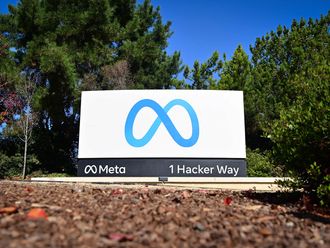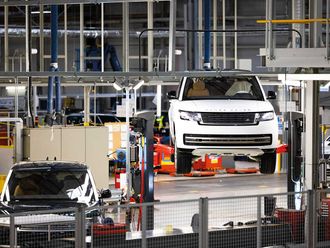Brasilia: Brazil’s central bank held its benchmark interest rate steady at an all-time low of 7.25 per cent on Wednesday, but signalled that policymakers are ready to hike rates again to rein in high inflation in Latin America’s largest economy.
The bank’s eight-member monetary policy committee, known as Copom, voted to keep the Selic rate unchanged for the third straight time as expected by all Sa56 economists surveyed by Reuters last week.
Most observers rightly predicted the bank was going to remove the previous guidance of maintaining rate stability “for a sufficiently prolonged period” and flag tighter policy ahead in a bid to keep inflation in check.
The central bank said in a statement that the decision was unanimous after assessing the economic and inflation outlook.
“The surprise is the statement, signalling an imminent hike in interest rates,” said Jankiel Santos, chief economist with Espirito Santo Investment Bank. “Our view is that the process of monetary cooling should start at the next meeting.”
Bets on a higher Selic started to grow in February when central bank chief Alexandre Tombini said he was “uncomfortable” with current inflation levels and that the bank will not hesitate to raise rates.
Inflation is moving closer to the 6.5 per cent ceiling of the official target range, raising concerns that price pressures could not only undermine the recovery, but also hurt the re-election chances of President Dilma Rousseff next year.
An increase in wholesale diesel prices announced late on Tuesday by state-run oil company Petrobras added pressure on the central bank to show a firmer stance to battle inflation. The 5 per cent hike in diesel prices could result in an indirect impact of as much as 0.16 percentage point this year on inflation, according to Banco Bradesco.
“The committee will accompany the evolution of the macroeconomic scenario until its next meeting, when it will define the next steps in its monetary policy strategy,” the bank said in the statement.
Most analysts agree that the central bank hinted upcoming inflation and economic activity data will be crucial in the next rate decision due on April 17.
The last time the central bank raised rates was in July of 2011 when authorities worried the economy was overheating.
Since then the Brazilian economy has taken a turn for the worse, posting meagre 0.9 per cent growth last year a despite barrage of government stimulus measures to revive activity.
Under Tombini, the bank has been at the forefront of the government’s crusade to revive the economy, slashing 525 basis points off the Selic in a little over a year.
Difficult balancing act
Now the central bank faces a difficult balancing act of keeping rates at a level that allows activity to gain momentum while not allowing prices to rise too fast. Inflation is expected to climb to 6.20 per cent in the 12 months through February, according to a Reuters poll on Tuesday.
The central bank is also trying to regain its credibility as many in the market believe it is following orders from Rousseff to spur growth instead of maintaining its autonomy and honouring its official mandate to keep inflation under control.
Tombini has said he expects inflation to ease in the second half of the year due to a more stable local currency, subdued food prices and government-sponsored cuts in electricity rates.
Rousseff is pointing to cheaper electricity as one of the main political victories of her government as she reaches the middle of her presidential term with a stagnant economy.
Some analysts say that slow-moving recovery will likely keep the central bank from tightening policy too quickly or hiking rates too much this year.
Tombini has indicated that any future rate increases will be limited in scope thanks to the strong fundamentals of Brazil’s maturing economy, as seen in its sound fiscal accounts and healthy financial position.
Luciano Rostagno, chief strategist at Westlb do Brasil, Said March inflation data will be key to the central bank decision in April and if it starts tightening then the most likely scenario is for a 25 basis points increase.
“Our call is still for a hike only in July, but...the odds for an increase in April have increased a lot, clearly.”












